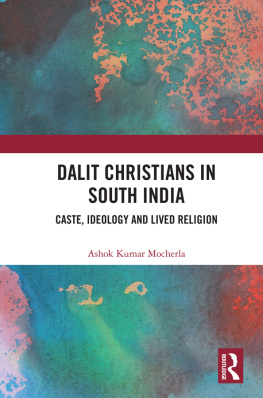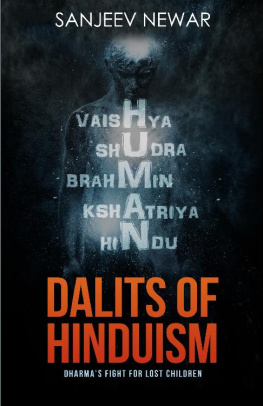THE PARIAH PROBLEM
Cultures of History
CULTURES OF HISTORY
Nicholas Dirks, Series Editor
The death of history, reported at the end of the twentieth century, was clearly premature. It has become a hotly contested battleground in struggles over identity, citizenship, and claims of recognition and rights. Each new national history proclaims itself as ancient and universal, while the contingent character of its focus raises questions about the universality and objectivity of any historical tradition. Globalization and the American hegemony have created cultural, social, local, and national backlashes. Cultures of History is a new series of books that investigates the forms, understandings, genres, and histories of history, taking history as the primary text of modern life and the foundational basis for state, society, and nation.
Shail Mayaram, Against History, Against State: Counterperspectives from the Margins
Tapati Guha-Thakurta, Monuments, Objects, Histories: Institutions of Art in Colonial and Postcolonial India
Charles Hirschkind, The Ethical Soundscape: Cassette Sermons and Islamic Counterpublics
Ahmad H. Sadi and Lila Abu-Lughod, editors, Nakba: Palestine, 1948, and the Claims of Memory
Prachi Deshpande, Creative Pasts: Historical Memory and Identity in Western India, 17001960
Laura Bear, Lines of the Nation: Indian Railway Workers, Bureaucracy, and the Intimate Historical Self
Vazira Fazila-Yacoobali Zamindar, The Long Partition and the Making of Modern South Asia
Bernard Bate, Tamil Oratory and the Dravidian Aesthetic: Democratic Practice in South India
Partha Chatterjee, Lineages of Political Society: Studies in Postcolonial Democracy
Mitunter aber verlangt eben dasselbe Leben, das die Vergessenheit braucht, die zeitweilige Vernichtung dieser Vergessenheit; dann soll es eben gerade klar werden, wie ungerecht die Existenz irgend eines Dinges, eines Privilegiums, einer Kaste, einer Dynastie zum Beispiel ist, wie sehr dieses Ding den Untergang verdient. Dann wird seine Vergangenheit kritisch betrachtet.Denn da wird nun einmal die Resultate frherer Geschlechter sind, sind wir auch die Resultate ihrer Verirrungen, Leidenschaften und Irrthmer, ja Verbrechen
Sometimes this same life that requires forgetting demands a temporary destruction of this forgetfulness; it wants to be clear as to how unjust the existence of somethinga privilege, a caste, a dynasty, for exampleis, and how greatly this thing deserves to perish. Then its past is regarded critically.Since we are the outcome of earlier generations, we are also the outcome of their aberrations, passions and errors, and indeed of their crimes
FRIEDRICH NIETZSCHE
The epigraph is taken from the R. J. Hollingdale translation of Nietzsches Untimely Meditations (ed. Daniel Breazeale, Cambridge: Cambridge University Press, 1997), 76. I have slightly altered the translation.
The Pariah Problem
Caste, Religion, and the Social in Modern India
RUPA VISWANATH
Columbia University Press
New York
Columbia University Press
Publishers Since 1893
New York Chichester, West Sussex
cup.columbia.edu
Copyright 2014 Columbia University Press
All rights reserved
E-ISBN 978-0-231-53750-6
Library of Congress Cataloging-in-Publication Data
Viswanath, Rupa.
The pariah problem : caste, religion, and the social in modern India / Rupa Viswanath.
pages cm
Includes bibliographical references and index.
ISBN 978-0-231-16306-4 (cloth : alk. paper) ISBN 978-0-231-53750-6 (ebook)
1. PariahsHistory. 2. PariahsSocial conditions. 3. CasteIndiaHistory. 4. IndiaSocial conditions. 5. IndiaHistory. I. Title.
DS432.P25V57 2014
305.5'6880954dc23
2013047446
A Columbia University Press E-book.
CUP would be pleased to hear about your reading experience with this e-book at .
Cover Photo: Bridgeman Art Library
Cover Design: Milenda Nan Ok Lee
References to websites (URLs) were accurate at the time of writing. Neither the author nor Columbia University Press is responsible for URLs that may have expired or changed since the manuscript was prepared.
For the Dalit women, children, and men who were the targets of the official policies and unofficial strategems this book describes, and for their descendants
CONTENTS
Pariah is a cruel word. For most speakers of English today, only the dimmest memory of what it once meant survives. But for its victims the memory of that cruelty has not been forgotten, in part because it is not just a memory. Casually employed by journalists and others for whom it is just a metaphoroften in reference to a person or state that deserves to be reviledit is a word that causes the descendants of those it once named to visibly wince. Like nigger it is not just a word. Like nigger it at once references and is itself a part of one of the most dehumanizing social orders the world has ever known. Why would I use such a word in the title of this book and throughout its pages? Because this is a book about that cruelty, and about the joint efforts of native elites and British colonizers to avoid the implications of that cruelty when its victims repeatedly forced it upon them. It is about their efforts to avoid facing the fact that they were themselves the beneficiaries of this cruelty. The phrase the Pariah Problem that appears in this books title is the name social elites gave to a fact that flew in the face of high caste Hindus claim to being the rightful leaders of native society, and of the British to enlightened rule; it is a name that attempted to stifle the historical imagination of those whom it names, who had alternative understandings of their identity. The Pariah Problem is the name elites gave, not to an injustice to be overcome, but to an inconvenient reality that threatened their own carefully cultivated public image, and that therefore had to be judiciously handled and made to disappear. The Pariah Problem is not my phrase, but theirs. This book uses a cruel word, it is true, but not in order to be cruel. It uses a cruel word because it is a book about a cruel reality. Not only in the title, but also in its initial chapters this book uses Pariah repeatedlyalways in invisible quotation marksin order to illumine for the reader the oppression under which a subordinated underclass lived. In this way I seek to capture the historical moment before anodyne bureaucratic terms like the Depressed Classes or Scheduled Castes were invented. It goes without saying that I do not endorse any of these terms; where Pariah names a cruelty openly, the others are continuous with an effort to cover it over. I revisit the politics of naming, and explain in more detail why none of these terms are suitable, in the introduction. For now I merely specify that the only term I use in my own voice, a term that becomes increasingly prominent by the end of the book, is Dalit. This is the only general term that was chosen by members of the minority it names, and it is the only term I endorse.















